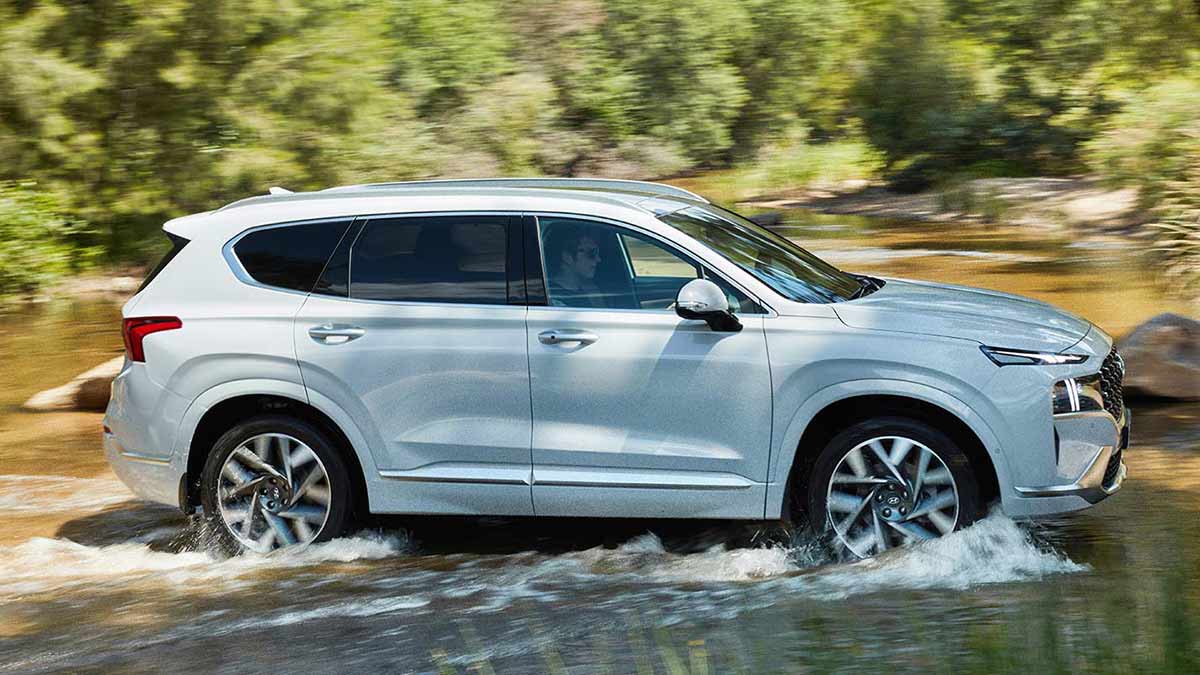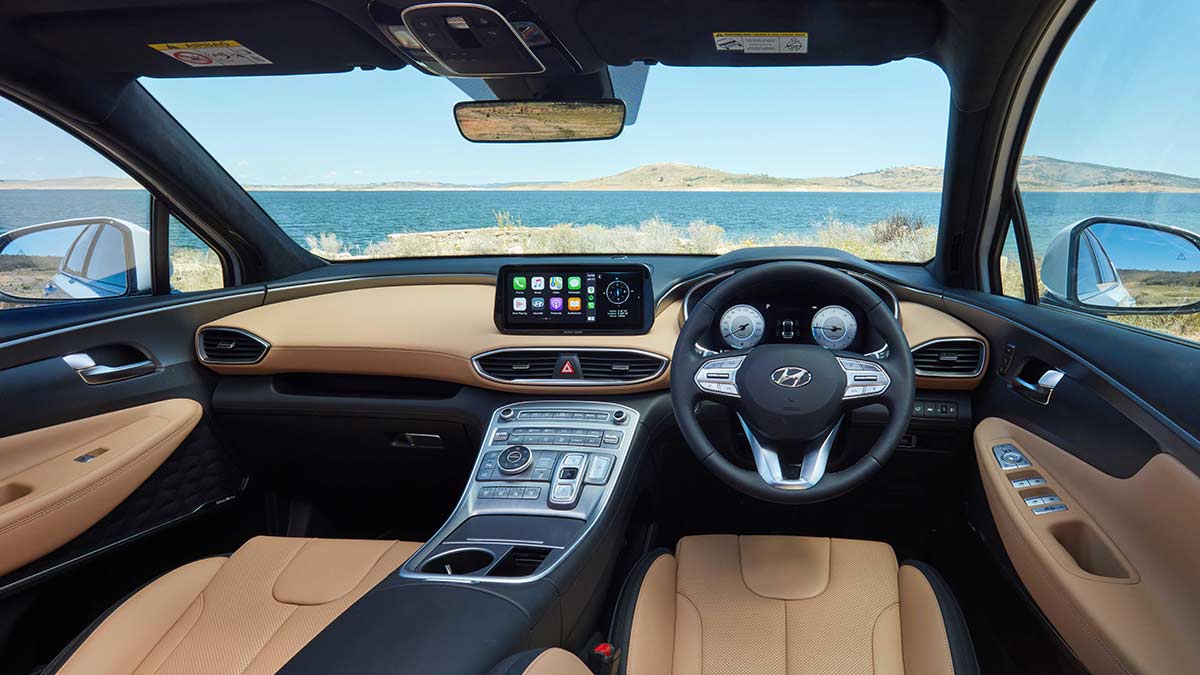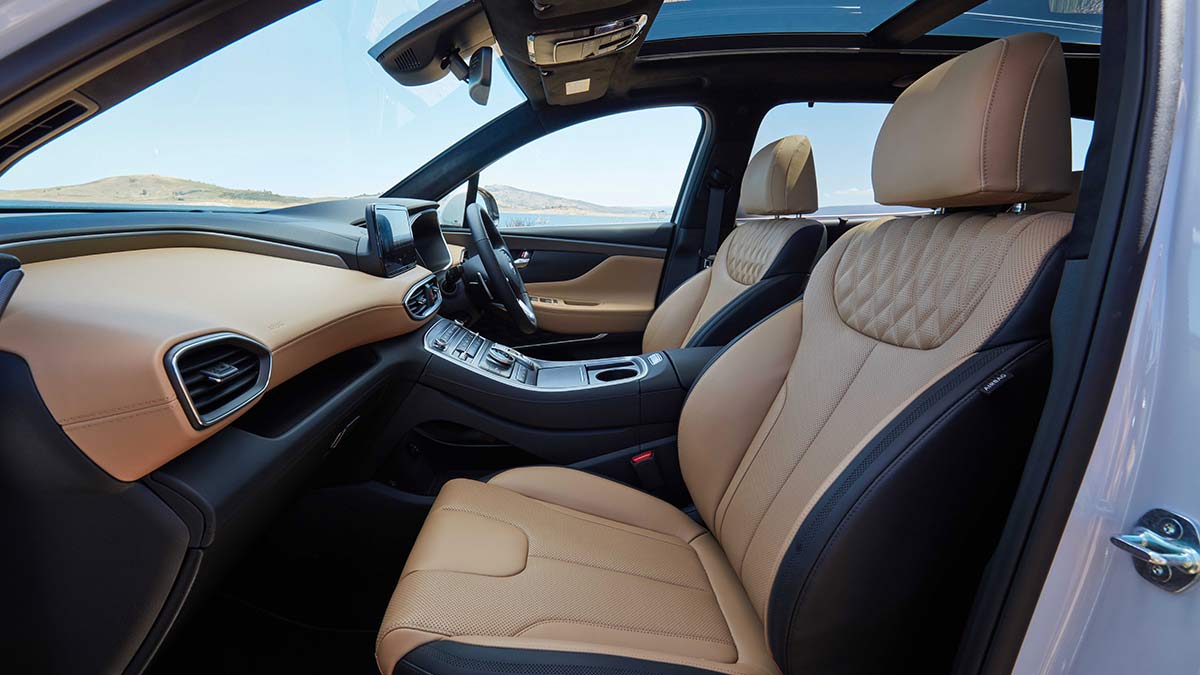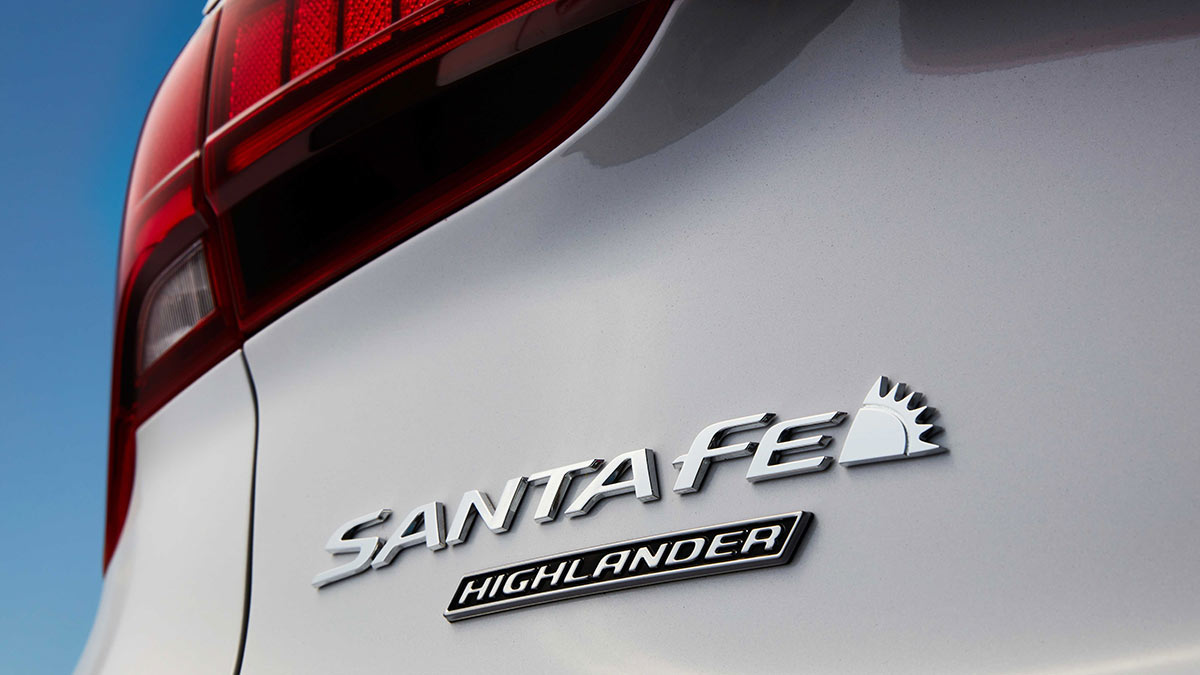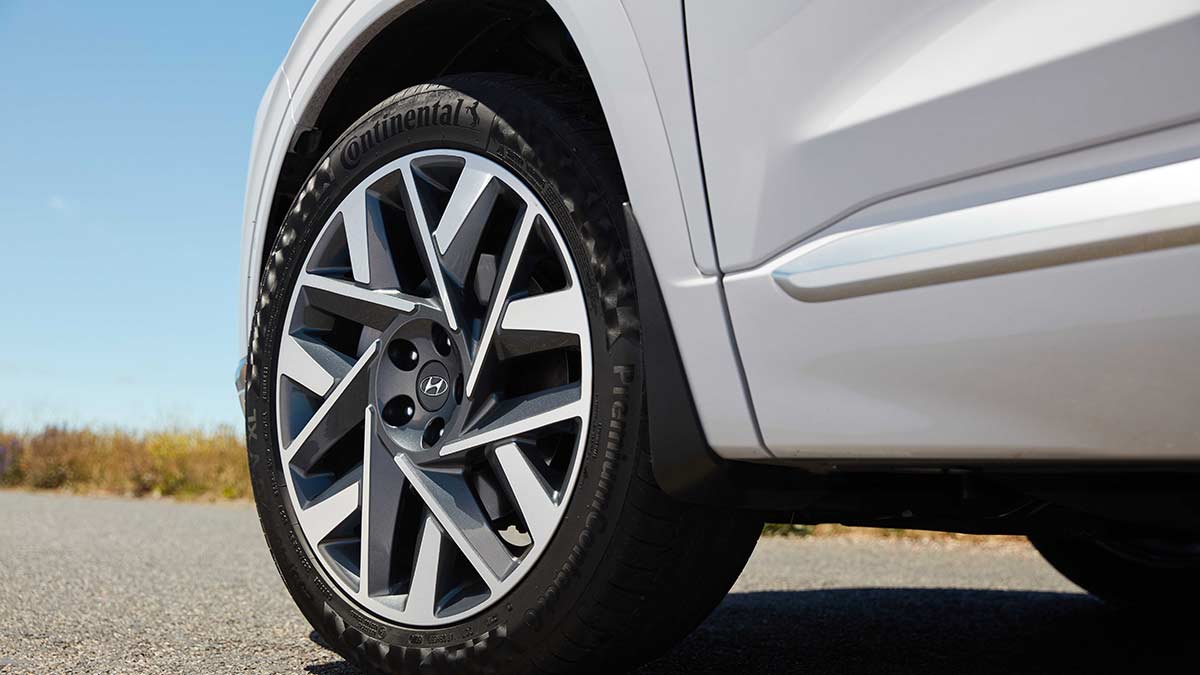The ninth-generation Toyota HiLux has arrived, bringing with it a futuristic forward exterior design, more safety and tech and the same rugged capability owners love. Will the updates tempt private buyers away from the Ford Ranger or are they just enough to keep fleets onside?
Hyundai Santa Fe Highlander 2021 road test review

Hyundai has brought in the 2021 Santa Fe with a whole raft of changes.
While the styling may look more or less the same as the outgoing model, it has shed its skin for a larger one.
Based on an all-new platform shared with the Kia Sorento, the new Santa Fe grows by 15 millimetres in length, 10 millimetres in width and five millimetres in height, combining to create a noticeably more spacious and comfortable interior and a bigger cargo area.
It’s offered in four specification variants, starting with the Santa Fe, stepping up to the Active and Elite and topping out with the Highlander as head of the family and also the variant we tested.
Thumbs up
- Great use of space
- Comfortable seating
- Clever safety and convenience features
- Perfect for a large family looking for a safe, well-equipped vehicle
Thumbs down
- Very intrusive lane-keep assist
- Poor placement and legibility of some switchgear
- Car park manoeuvrability
In this article
Price and positioning
The Santa Fe is a stalwart of the diverse large SUV segment which accounts for about 10 per cent of total vehicle sales in Australia. Direct competitors are the Toyota Kluger (from $44,850), Mazda CX-8 ($39,990), Skoda Kodiaq (from $46,390), VW Tiguan Allspace (from $40,990) and of course its cousin the Kia Sorento ($46,850).
Beginning at $44,700 for the base model and topping out at $65,200 for the extremely well-equipped Highlander, the Sante Fe is very competitively priced, which along with the nameplate’s rock-solid reputation is reflected in the sales figures.
Safety first
The Santa Fe, which carries over its five-star ANCAP safety rating from the outgoing model, is a well-equipped vehicle from base level up, and safety features have not been overlooked. All the models have technologies including forward collision-avoidance assist with junction turning, driver-attention warning and blind-spot collision avoidance-assist systems.
The Highlander test car also features a head-up display, parking collision-avoidance assist and remote smart-parking assist system. The novel blind-spot view monitor is an impressive new feature. When in drive, simply flicking the indicator will display in the instrument cluster a high-definition camera view along the flank of the vehicle in that direction, which is good for lane changes and for seeing cyclists and cars approaching from behind.
The two top models also have a system to prevent the unintentional leaving or locking-in of children or pets, using internal ultra-sonic sensors. Wonderful system, but why not fit it to all the models?
The inside story
The extra space in the Santa Fe is realised mostly through a 39-millimetre increase in leg room for second-row passengers, and as these slide forward this can translate into more space in the rear row too. It’s still no limousine but it’s enough extra room to make long trips a little more comfortable over say a Nissan X-Trail or Skoda Kodiaq.
As far as seven-seater SUVs go there is a very useful 130-litre luggage capacity. In five-seat configuration this can be between 571 and 782 litres, since the middle row slides. With all the seats down you get a cavernous 1649 litres. It’s a very tall shape too which should make a trip to Ikea a doddle.
The Highlander variant we tested felt classy inside and the materials were top notch, as was the fit and finish. There are some nifty design elements too – most notable is the 1960s Valiant-style press-button drive selector. The Active and Elite receive a similar interior makeover with the base-model Santa Fe carrying over a conventional stick shifter.
Another honourable mention is the vertical phone holder-charger in the centre console, a brilliant innovation that takes up less room and works better than the usual flat tray. It also keeps the phone out of your line of sight while driving.
It’s not all great news though. Some switchgear on the large centre console and the steering wheel is hard to read in some lighting conditions. More annoying is the position of the parking brake – oddly placed down by the driver’s right knee.
In terms of creature comforts and gizmos, the range-opening Santa Fe and Active variants feature an 8.0-inch multimedia system with Apple CarPlay and Android Auto connectivity, a colour instrument cluster display, and wireless smartphone charging.
The Elite swaps this for a 10.25-inch unit featuring navigation, which is also found in the flagship Highlander, but also adds a 12.3-inch LCD instrument cluster, a surround-view monitor, nappa leather upholstery, and heated (and ventilated) front seats, outboard second row and steering wheel.
The ambient lighting feature with a choice of 64 colour options was fun, enabling an all-pink interior when my partner and I went on a Valentines date to Coles. There are also plenty of USB and power points.
On the road
The Santa Fe is no sportscar and certainly not as dynamic as its Skoda Kodiaq or VW Tiguan rivals. The Hyundai is, however, very comfortable with large cossetting seats with plenty of adjustment and a compliant ride.
You quickly become aware of the vehicle’s size and relatively poor turning circle in the confines of a shopping centre car park. The array of cameras mitigates this to some degree.
All four variants are available with the same two engine options, a 3.5 V6 petrol generating 200kW and 336Nm and a 2.2 turbo-diesel developing 148kW, with a very decent 440Nm. At this point Hyundai offers the petrol only in front-wheel drive and the diesel in all-wheel drive.
Our test vehicle was the diesel and the engine was one of the Santa Fe’s strong points, giving a none-too-lightweight car quite sprightly and flexible performance.
The new eight-speed gearbox was superb and well matched to the engine with little sign of the hesitation that many DCT units suffer from. Hyundai claims a 19 per cent fuel economy improvement over the previous model, primarily as a result of the new gearbox, giving 6.1L/100km. For comparison the V6 petrol is stated as 10.5L/100km.
Although the Santa Fe was well equipped with safety technology, some of it was quite intrusive. A particular culprit was the lane-keep assist system, issuing unnecessary alerts and at times interventions. This can be switched off in vehicle settings.
I did like the head-up display though. As a taller guy I generally find these things too low even when they are adjustable. The Santa Fe’s execution was just right and a genuinely useful feature.
|
Pricing |
List price: $65,200 before on-road costs. Price as tested: $65,495 before on-road costs. Model range: $44,700 to $65,200 before on-road costs. |
|---|---|
|
Drivetrain |
3.5 V6 petrol or 2.2 turbo-diesel, eight-speed auto (petrol) eight-speed DCT (diesel). Power: 200kW (petrol) 148kW (diesel). Torque: 336Nm (petrol) 440Nm (diesel). Wheels: 255/45 R20. |
|
Fuel |
91 RON petrol and diesel, 67-litre tank. Consumption: 10.5L/100km (petrol) 6.1L/100km (diesel). Emissions: 244g/km CO2 (petrol) 160g/km CO2 (diesel). |
|
Standard safety |
Forward collision-avoidance assist, junction turning, blind-spot collision-avoidance assist (rear), high-beam assist, speed-limit assist, lane-following assist, lane-keeping assist, cross-traffic collision-avoidance assist, parking collision-avoidance assist (reverse), blind-spot view monitor, rear-occupant alert, safe-exit assist, smart cruise control, surround-view monitor.
|
|
Standard features |
20-inch alloy wheels, nappa leather interior, ambient lighting, 12.3-inch full LCD cluster, panoramic glass sunroof, head-up display, remote smart parking assist, surround view monitor, LED projector beam headlamps, LED tail lights, power passenger’s seat, heated and ventilated front seats, heated rear outboard seats, heated steering wheel, LED interior lighting. |
|
Warranty |
Five-year unlimited-kilometre warranty. Capped-price servicing plan. Servicing schedule every 12 months/15,000 kilometres. |
